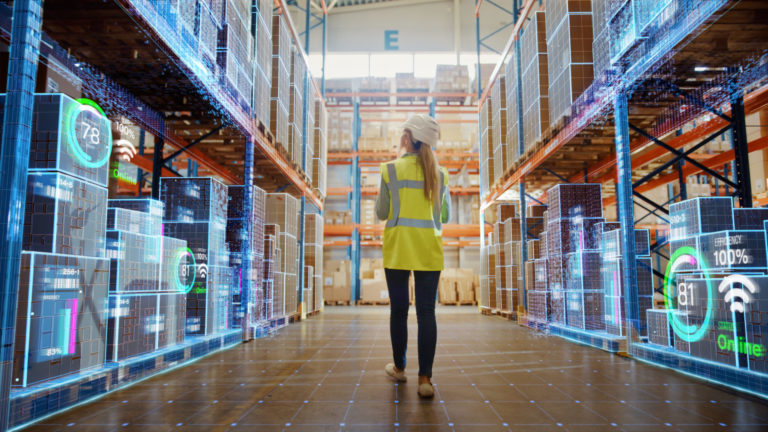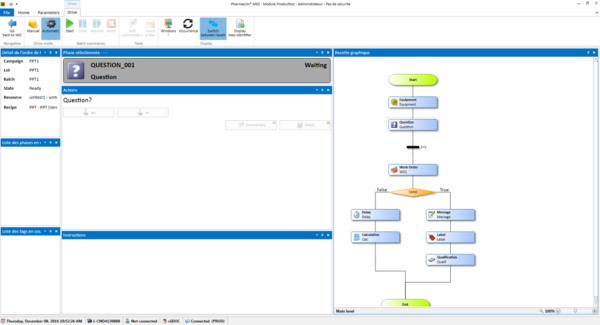Industry 4.0, also known as the future industry, smart manufacturing, and the Industrial Internet of Things (IoT) are current phenomena essential to the growth and productivity of the industrial sector. Thus, this industrial evolution impacts the digitalization of industrial processes.
The industry of the future
Industry 4.0, the fourth industrial revolution, represents, in essence, a symbol of connectivity between objects and people throughout the manufacturing process.
While the third industrial revolution focused on automation and led to the development of computer numerical control (CNC), supervisory control and data acquisition (SCADA), integrated resource management (ERP), and manufacturing execution system (MES), the myriad innovations of Industry 4.0 essentially revolve around terms such as connected, real-time, integrated, modular, artificial intelligence, and smart manufacturing.
The transition to Industry 4.0, also called industrial digital transformation, affects all industries, including pharmaceutical, food, chemical, and manufacturing. Improvements in quality, lead times, and manufacturing cost significantly impact the industrial sector. To adapt, today’s companies need to understand their processes better.
Digitization of industrial processes, why and how?
If you ask Internet users about the meaning of digitalization, the most frequent answers can be summarized: Digitization is the transition from paper to digital format.
When we try to go into detail and talk about the digitization of a business, the following definition emerges: the digitization of a business involves the use of digital solutions to take over the protocols (or processes) of a business so that employees can concentrate on operations with higher added value. It is more efficient to keep the notion of digitization of documentation to optimize the given task. The more specialized structures complete these notions by standardizing the different processes to be able to manage them better throughout the organization: in concrete terms, digitization will make it possible to set up a simple common language, which takes the form of data, between all the employees of the same organization. This common language will enable the company to develop its various businesses thanks to analyzing the data obtained by the digitization of tasks.
How to optimize digital industrial processes ?
The two main challenges of digitizing processes are the optimization and automation of operational processes leading to increased agility and better performance; customer relations, with new services implemented around services and facilities; and new business models, for example, the transition from selling products to selling uses, marketing connected services, leveraging data, etc.
So, for example, knowing how to carry out a daily round of preventive maintenance on a site is know-how, as is knowing which bolt to use to repair a given machine. You quickly realize that the amount of work to be done is somewhat overwhelming, especially if you combine this with :
The number of sites that make up a company.
The multiple trades that the company needs
The different types of machines are used daily.
There are many digital solutions today that allow you to carry out a large part of your digitization and the digitalization of industrial processes.
The foundations of reflection to optimize industrial processes
Manufacturers can progress toward Industry 4.0 through three pillars of thinking: digitization, sensitization, and optimization.
Digitization
Before using sensitization and optimization, existing processes will need to be digitized to provide better visibility into everything happening in real-time. Digitizing workflows allows for productivity and product monitoring, and immediate action. Thus, failures and malfunction detection are possible in real-time.
Delays are costly, both time and money, and digitization helps eliminate them by providing instant alerts and notifications of operations that are not on the schedule. It also creates a wealth of data that optimize operations. It facilitates the development of true cost models and gives manufacturers the ability to focus on inefficiency and productivity improvement sources.
Sensitization
Sensitization is the first step toward connecting machines, since it removes human supervision and frees up resources for more critical areas. IoT is at the forefront of this evolution.
For example, sensors are cost-effective ways to assess temperature, water content, air quality, motion, vibration, etc. Thus, the equipment automatically detects malfunctions, resulting in automated triggers and configurations from a software and hardware perspective. For example, implementing non-contact temperature sensors can lead to the automatic adjustment of roll speed when gluing two pieces of cardboard in a cardboard manufacturing plant. This data can then be used to optimize the gluing criteria and the durability of the final product.
Optimization
For all the data collected by digitization and sensing, the next priority is to turn it into something interesting. The optimization of manufacturing data is based on analysis, simulation, predictive and preventive maintenance, etc. Ultimately, the goal is to reduce costs and improve quality.



